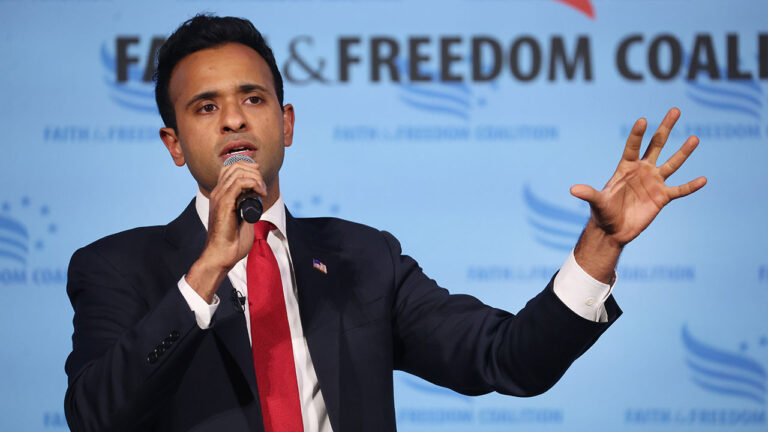
In the ever-evolving landscape of cryptocurrency, a recent proposal by Vivek Ramaswamy has sent shockwaves through regulators and the industry alike. Ramaswamy’s sharp proposition aims to limit government oversight on cryptocurrency, presenting a bold stance that challenges the status quo. This move has triggered a myriad of discussions, with stakeholders expressing both support and concern. In this comprehensive exploration, we will delve into the details of Vivek Ramaswamy’s proposal, analyzing its potential implications on the cryptocurrency ecosystem.
Understanding the Genesis of the Proposal
Vivek Ramaswamy, a prominent figure in the business world, has long been an advocate for limited government intervention. His proposal to curtail government oversight on cryptocurrency is rooted in the belief that excessive regulation stifles innovation and hampers the industry’s growth. Ramaswamy contends that a more hands-off approach would enable cryptocurrency to flourish organically, fostering a climate of innovation and creativity.
Ramaswamy’s Vision: A Closer Look
The heart of Vivek Ramaswamy’s proposal lies in redefining the relationship between governments and the cryptocurrency industry. He envisions a scenario where regulations are streamlined, providing enough room for businesses to thrive while still maintaining a semblance of order. Ramaswamy argues that a delicate balance is essential, preventing the stifling of innovation without compromising on the need for a secure and transparent financial system.
The Ripple Effect on Regulators
Vivek Ramaswamy’s sharp proposal to limit government oversight on cryptocurrency has not gone unnoticed by regulatory bodies. The idea of relinquishing some control over this burgeoning industry has raised eyebrows and generated heated debates. Regulators, accustomed to maintaining a tight grip on financial markets, are now grappling with the prospect of adapting to a more dynamic and decentralized landscape.
Industry Response: Mixed Reactions
As news of Ramaswamy’s proposal reverberated through the cryptocurrency community, industry players responded with a spectrum of reactions. Some applauded the boldness of the proposition, seeing it as a step towards fostering innovation and entrepreneurial spirit. On the flip side, others expressed reservations, highlighting the potential risks associated with reduced oversight. The industry finds itself at a crossroads, torn between the desire for freedom and the need for a safeguarded financial ecosystem.
Potential Implications for Cryptocurrency Enthusiasts
For cryptocurrency enthusiasts, Vivek Ramaswamy’s proposal introduces a new layer of uncertainty. While the prospect of less stringent regulations might seem appealing, the potential pitfalls cannot be ignored. A delicate balance must be struck to ensure that the industry remains a fertile ground for innovation without becoming a breeding ground for illicit activities.
Navigating the Path Forward
As the debate surrounding Vivek Ramaswamy’s sharp proposal continues, the cryptocurrency community faces a critical juncture. Collaborative efforts between industry leaders, regulators, and enthusiasts are imperative to chart a course that safeguards the essence of cryptocurrency while addressing legitimate concerns. Finding common ground is essential to strike a balance that allows innovation to thrive without compromising the integrity of the financial system.
Conclusion: The Uncharted Territory Ahead
In conclusion, Vivek Ramaswamy’s sharp proposal to limit government oversight on cryptocurrency has alarmed regulators and the industry itself. This bold move has ignited a crucial dialogue about the future of cryptocurrency and the role of government in shaping its trajectory. As the industry navigates uncharted territory, stakeholders must engage in constructive conversations to ensure a harmonious coexistence between innovation and regulation. The coming months will undoubtedly unveil the direction in which the cryptocurrency landscape will evolve, and Vivek Ramaswamy’s proposal will continue to be a focal point in shaping this narrative.